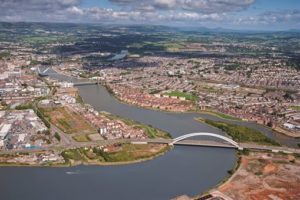Huge figureheads to go on display in Plymouth

Thirteen wooden figures that once adorned warships have been hung from the ceiling of a new Plymouth museum.
In their heyday they gazed out grandly from the prows of British warships as the vessels, whose fighting spirits they were supposed to embody, powered into battle.
Now as part of an £1m restoration project, an extraordinary collection of 14 wooden naval figureheads has been rescued from damp obscurity and given a glorious new lease of life.
The figures, weighing a total of 20 tonnes, have been suspended from the ceiling of the atrium to a new museum and gallery in the maritime city of Plymouth, Devon, according to The Guardian.
At more than two tonnes and four metres high, the 14th figure, William IV (King Billy), is too hefty to be hung from the ceiling of the Box and has instead been given a prominent position at ground level.

The museum opens to the public in May but before then passersby will be able to glimpse the figures through the Box’s large windows.
Steve Conway, conservator at the museum, says he is delighted with the effect. “They seem to sweep in from each side,” he said. “We want people to gaze up at them as they would have looked up at them from the quayside when they were on the prows of their vessels.”
Conway’s favourites include HMS Defiance, who has a bushy beard and plumed helmet. “He needed extensive restoration,” says Conway. “His timber was incredibly decayed, and concrete had been used during a previous restoration for his armour and breast plate.” Defiance needed a lot of care to be saved.
Some of the figureheads were so ravaged by spending decades at sea, in addition to being poorly looked after following their retirements, that their insides had turned into a soggy mulch; one or two were still so wet that water poured out when they were pierced.
Experts used a method called sonic tomography, usually employed by arborists to check the integrity of living trees, to map the internal state of the figureheads. Their insides had to be dried in large purpose-built chambers to minimise warping and shrinkage.
Another challenge has been restoring the colour of the carvings. Experts carried out microscopic analysis of the paint the figureheads had been decorated with over the years.
Some were found to have started off-white, but the decision was made to keep them colourful. The hues used are based on those to be seen on a set of 1912 cigarette cards depicting navy figureheads.
The figureheads have seen a great deal of history, their ships taking part in campaigns in China, Crimea and New Zealand. They would have seen good and bad – from battles with pirates to the sight of their crews plundering treasures from others.
Read the full article in The Guardian.










